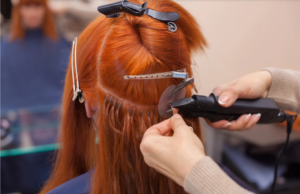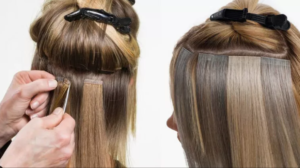Do Hair Extensions in the Market Have Issues with Tangling or Shedding?
People often worry about tangling and shedding in hair extensions. This is normal to some extent, as even natural hair experiences shedding daily.
Hair extensions1 can shed and tangle due to wear, poor maintenance, or low quality. Choosing premium products and following proper care routines reduces these problems.
Learn how to avoid shedding and tangling while using hair extensions effectively.

What is the biggest problem with hair extensions?
Hair extensions often face issues like tangling2, shedding, or unnatural blending. These problems arise from quality concerns, improper installation, or poor maintenance.
The main challenges with hair extensions are tangling, shedding, and maintaining a natural look. High-quality products3 and correct care help minimize these issues.

Key Causes of Problems
| Problem | Cause | Solution |
|---|---|---|
| Tangling | Low-quality hair or poor upkeep | Use quality products, condition regularly |
| Shedding | Improper installation, weak bonding | Opt for professional installation methods |
| Unnatural Look | Mismatched color or texture | Choose well-matched, customizable products |
The above issues often happen when users choose cheaper extensions or neglect aftercare. Proper handling and investing in better extensions ensure durability and satisfaction.
Are hair extensions supposed to shed?
All hair extensions shed to a degree, just like natural hair. However, excessive shedding indicates a problem with quality or installation methods.
Minimal shedding4 in hair extensions is normal. Excessive shedding can be prevented with careful installation and good aftercare.

Reducing Shedding in Extensions
To reduce shedding, ensure the cuticles5 in extensions are aligned, and always brush with gentle tools. Handle extensions delicately, especially during washing and styling.
What is the healthiest hair extension method?
The healthiest hair extension methods prioritize the natural hair’s health, using techniques that don’t cause stress to the scalp or strands.
Tape-in6 and hand-tied wefts are among the healthiest extension methods due to their lightweight and non-damaging features.

Comparing Methods for Hair Health
| Method | Benefits | Considerations |
|---|---|---|
| Tape-In | Lightweight, reusable | Requires professional application |
| Hand-Tied Weft | Comfortable, natural look | Time-consuming installation |
| Clip-In | Temporary, easy to apply | May stress hair if worn frequently |
Choosing the healthiest method depends on individual hair type, lifestyle, and maintenance commitment.
Why do my hair extensions get tangled so easily?
Tangling7 happens when extensions lack proper care or when the quality of hair is substandard. External factors like weather or friction can also contribute.
Extensions tangle due to dryness, improper brushing, or low-quality products. Regular conditioning and detangling reduce tangling effectively.

Practical Tips to Prevent Tangling
- Use sulfate-free shampoos and conditioners.
- Brush extensions daily with a soft-bristle brush.
- Avoid sleeping with wet hair extensions to prevent matting.
- Use protective styles when exercising or sleeping.
Consistent care ensures your extensions remain smooth, shiny, and tangle-free over time.
Conclusion
Some tangling and shedding in hair extensions are inevitable but manageable with proper care and quality choices. Select reliable products and follow care routines for the best results.
-
Explains what hair extensions are and how they are typically applied. ↩
-
Learn the causes of tangling and how to prevent it in hair extensions. ↩
-
Understand what factors contribute to high-quality hair extensions. ↩
-
Clarifies whether shedding is normal in hair extensions. ↩
-
Learn why the alignment of cuticles is important in hair extensions. ↩
-
Explains the benefits of tape-in extensions and their health aspects. ↩
-
Offers practical tips to prevent tangling in hair extensions. ↩



